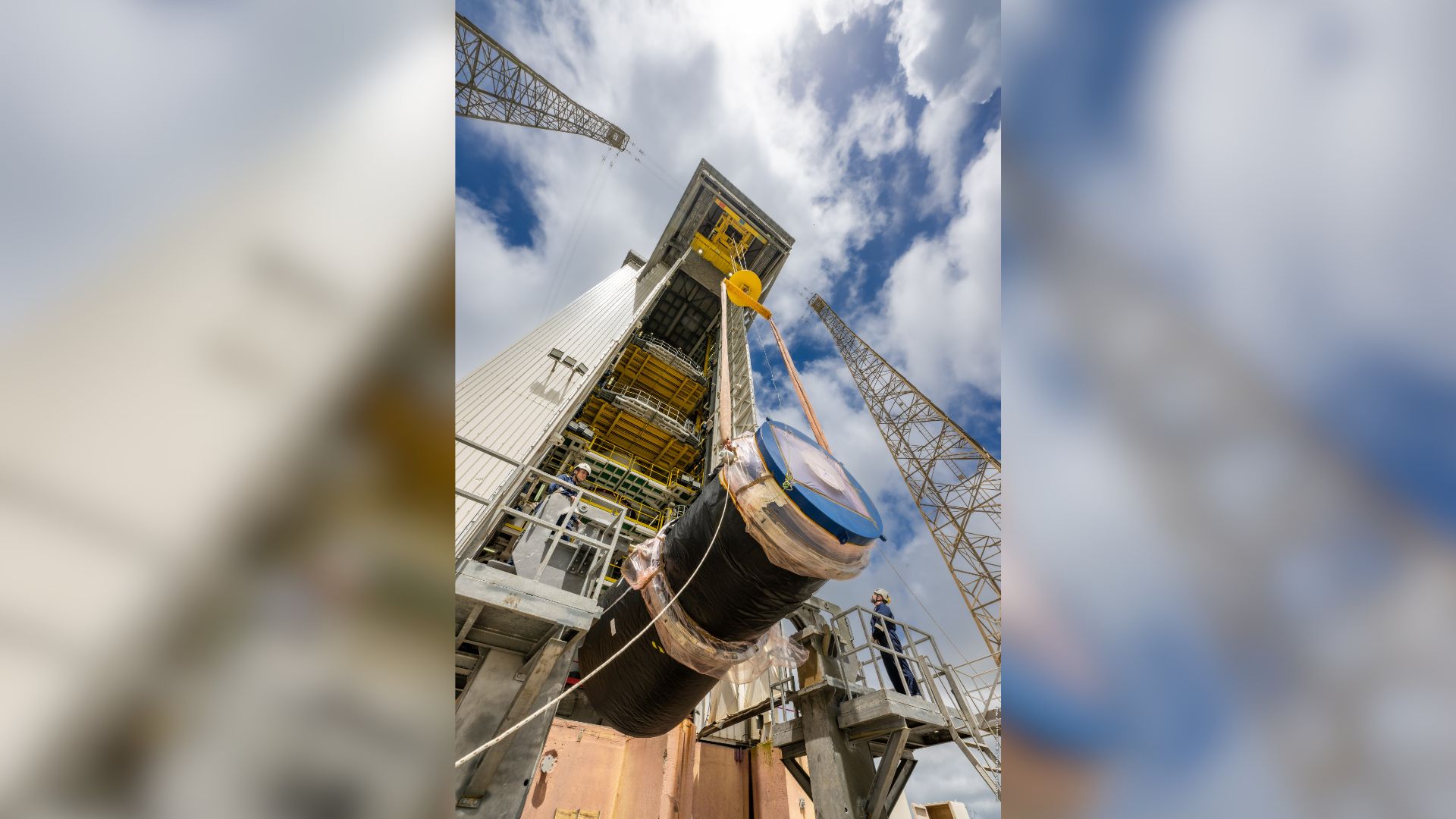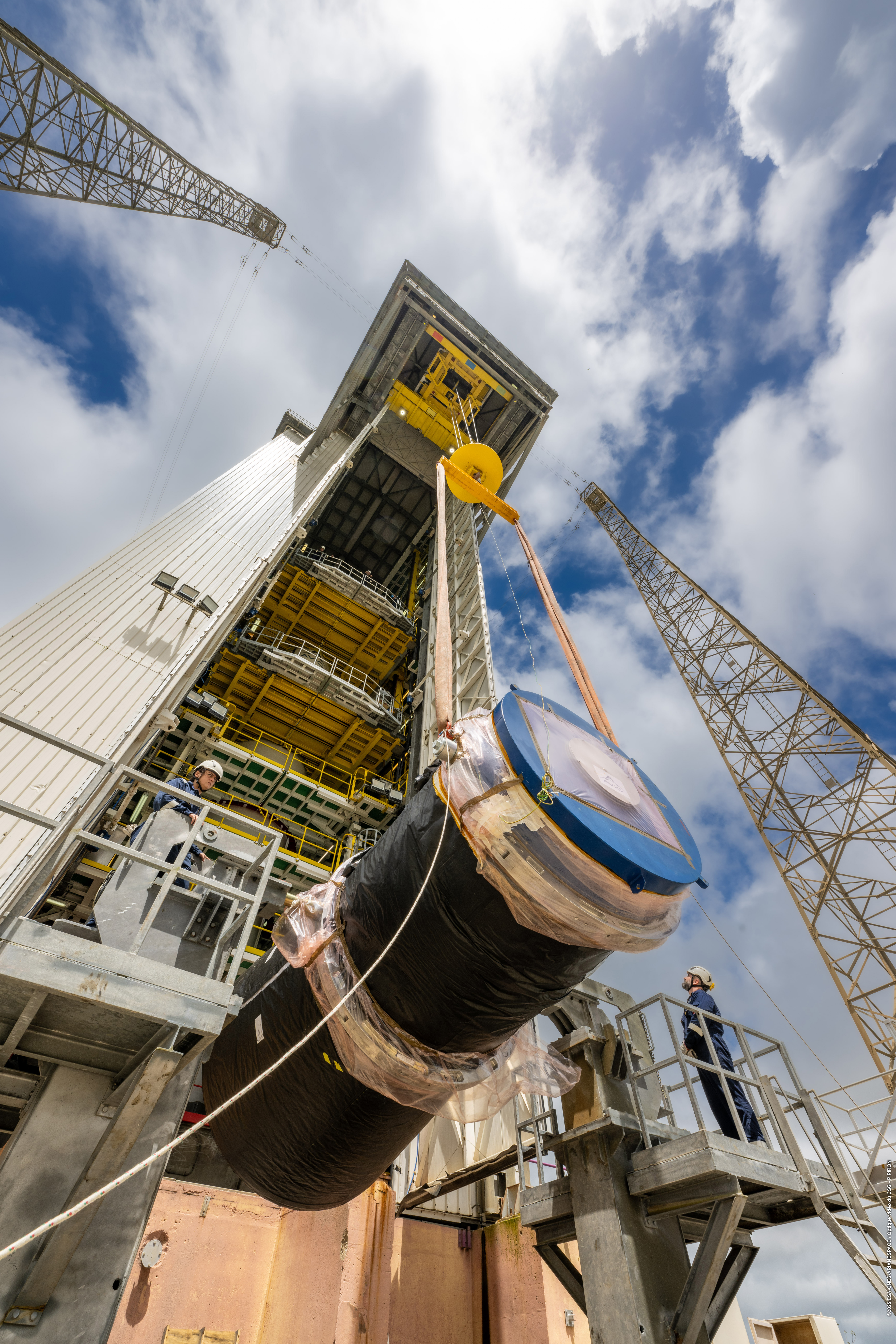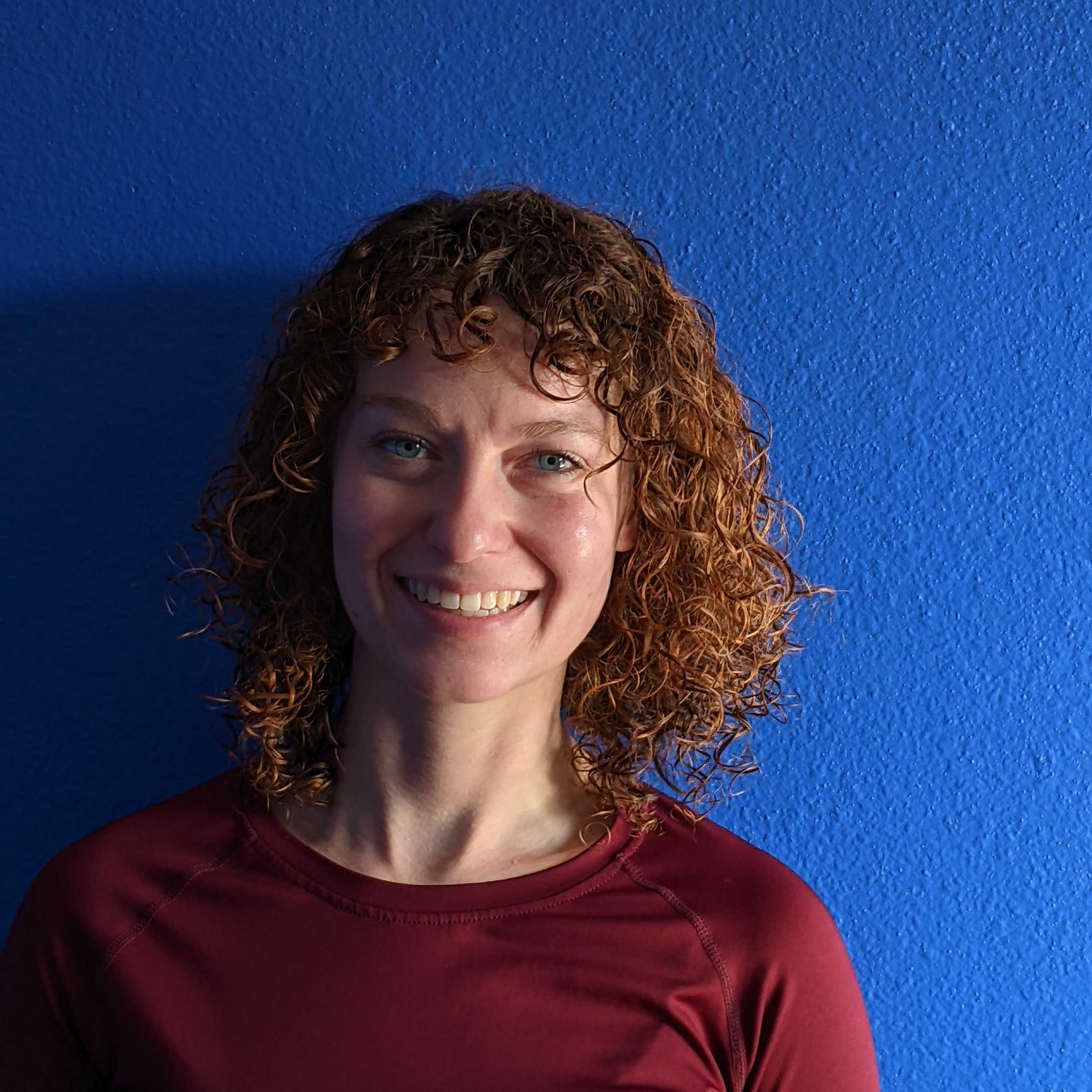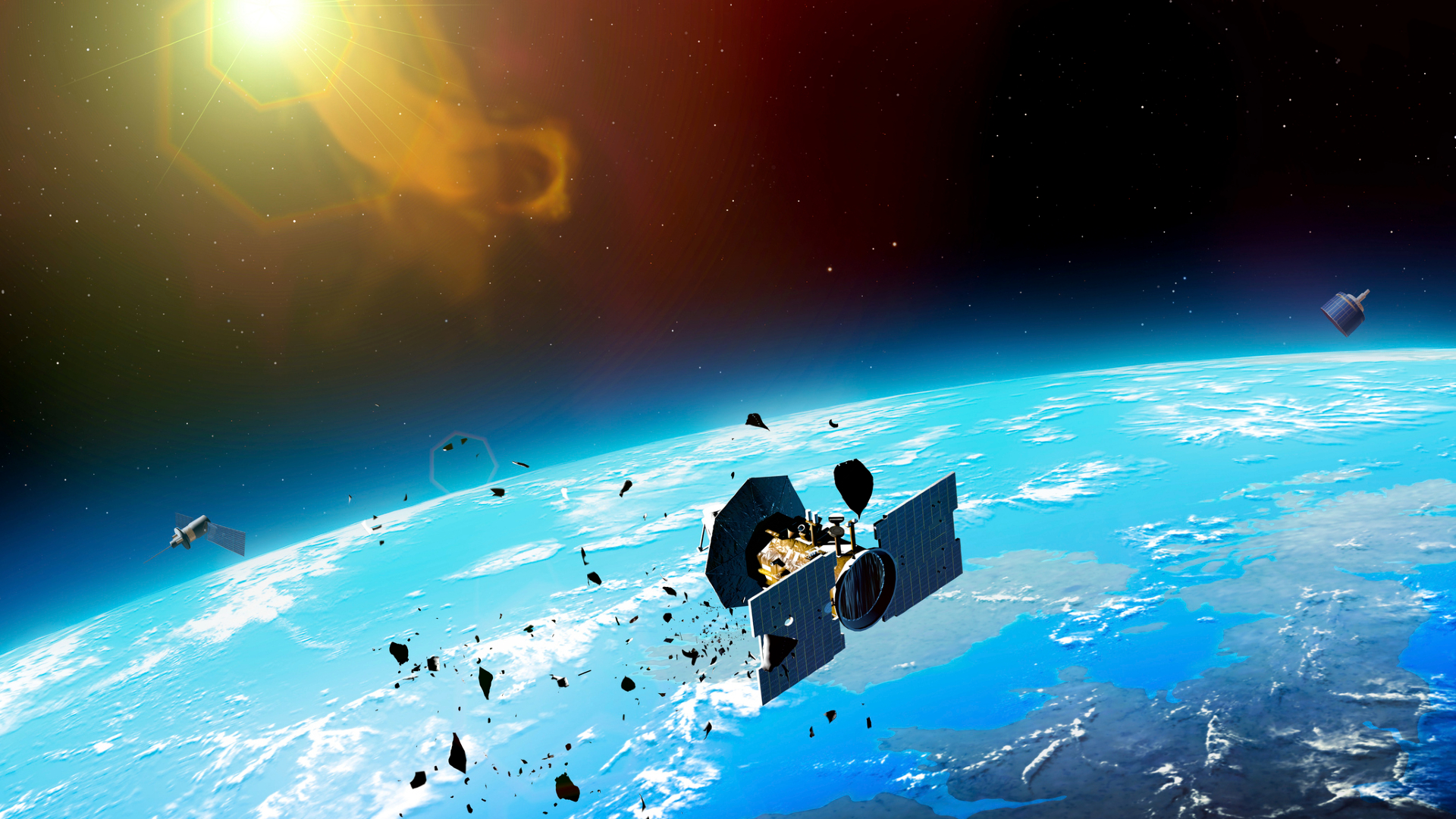See Vega-C rocket's 3rd stage hoisted for upcoming launch | Space photo of the day for July 3, 2025
The Zefiro-9 was hoisted in preparation for the Vega-C flight VV27.

Since its first launch in 2012 from French Guiana, Europe's Vega rocket system has been instrumental in helping put multiple satellites in low Earth orbit with only a single launch.
What is it?
The Vega-C rocket — a more powerful variant developed by the European Space Agency (ESA) and operated by the French company Arianespace — took off its inaugural launch on July 13, 2022.
The Vega-C failed on its next launch, in December 2022, and battled technical issues on its way back to the pad. The rocket aced its third-ever flight in December 2024 and succeeded on its next liftoff as well, in April of this year.
Where is it?
The Vega-C rocket is on a launch pad at the Guiana Space Centre, northwest of Kourou in French Guiana.
Why is it amazing?
The Vega-C is made of four stages, which help the rocket overcome Earth's gravity and get its payloads to space. The first stage, or P120C, is the rocket's main booster. Fueled with solid propellant, it helps provide the main thrust to lift the rocket off the pad.
The Zefiro-40 second stage is also solid-fueled and helps increase the rocket's speed after the first stage.
The Zefiro-9 is the Vega-C rocket's third stage, and burns through around 10 tons of solid propellant, according to ESA. Vega-C's fourth stage is known as AVUM+.
Breaking space news, the latest updates on rocket launches, skywatching events and more!
The third stage highlighted in this photo is being added for the upcoming Vega-C flight VV27, which plans to take several CO3D satellites into space. These satellites are part of a larger satellite creating a 3D map of our planet from low Earth orbit.
Want to learn more?
You can read more about the European Space Agency's many different research projects, along with satellites in space.
Kenna Hughes-Castleberry is the Content Manager at Space.com. Formerly, she was the Science Communicator at JILA, a physics research institute. Kenna is also a freelance science journalist. Her beats include quantum technology, AI, animal intelligence, corvids, and cephalopods.
You must confirm your public display name before commenting
Please logout and then login again, you will then be prompted to enter your display name.


